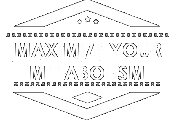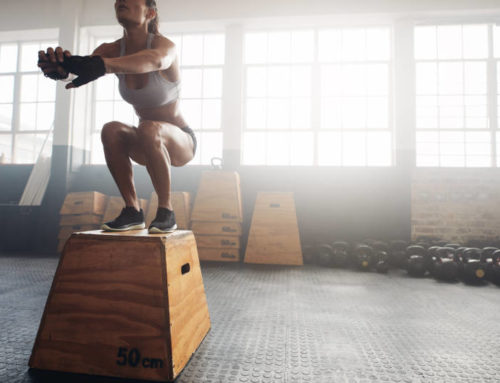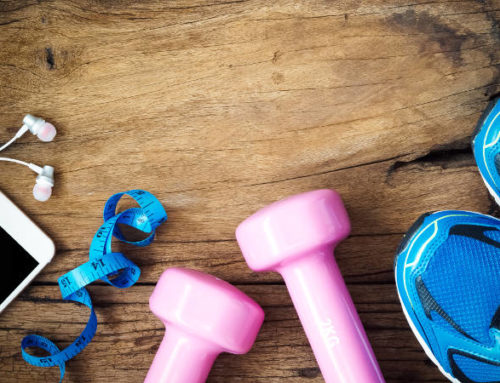“Here’s an easy breathing exercise that gives you more metabolism and more energy. Also read why deep breathing slows aging (plus has other benefits).”
Ultimately, everything we say about the metabolic system comes down to energy. Getting it. Storing it. Burning it. From a physiological standpoint, we quite literally have energy to burn. Our bodies can store tremendous reserves of all the enzymes, acids, and other important substances that enable our muscles to move and our metabolic systems to function at top efficiency.
- We have sufficient energy stores to enable us to exercise for five straight days without refueling.
- Even a couch potato has enough stored energy to provide for a 50-mile run.
The energy, of course, is stored as fat. And using these energy stores in a metabolically efficient manner is the real sticking point. That’s why learning how to maximize your access to these fuels is a crucial step in your metabolic makeover.
As you’re well aware, this website has tried in many ways to impress you with the importance of proper fitness and nutrition. However, all the best exercises and all the best nutrition in the world will be useless unless your body has the proper amount of oxygen to unleash its energy.
Oxygen is a crucial component to a strong and healthy metabolism.
So before we talk about breathing exercise tips, we must talk about oxygen’s magical effects on our body.
There’s Magic In The Air
You may not realize it, but your lungs aren’t simply empty sacs that automatically inflate and deflate.
- Lungs are organs crowded with specialized tissues designed for this crucial exchange of a variety of gases and the metabolism that follows.
Each of your lungs weighs about a pound. Since lungs do not have muscles, they depend on muscles in the rib and stomach areas for their crucial movements.
- Your diaphragm (that partition of muscle and connective tissue that separates the chest and abdominal cavities) contracts and flattens.
- At the same time, the muscles in the vicinity of your ribs gently pull the rib cage upward. This enlarges the chest cavity and causes air to be “sucked” into the lungs.
- When the rib muscles and diaphragm relax to their original positions, air is forced out.
On a day that’s devoid of aerobic exercise, you’ll unthinkingly perform this exchange about 20,000 times. Over an entire lifetime, that amounts to more than half a billion round trips. And it’s all automatic: no thought, no preparation. Your medulla, that part of the brain stem that controls involuntary action, keeps all this equipment working without conscious thought. If it didn’t, you’d die within minutes.
The Nose
A breath of fresh air can enter your lungs through your nose or your mouth. As you probably learned in your high-school health class, the nose is the preferred route. The hairs in the nose help not only to filter the air of impurities but also to warm the air you breathe, bringing it closer to a temperature that your body can use effectively.
Your Air Exchange System
When you exercise vigorously, especially when you do aerobic exercises, you may start to pant.
- That’s not because your lungs need more air; it’s because your blood has too much carbon dioxide.
- The need for oxygen in your muscles is more than the heart can handle, forcing fuel to be burned with little or no oxygen—anaerobically.
- The result is a buildup of lactic acid, which causes muscle soreness and fatigue.
To neutralize this buildup, the body produces more carbon dioxide.
- The brain causes the breathing rate to quicken in order to raise the amount of oxygen coming in and, in turn, to increase the elimination of carbon dioxide.
- During a vigorous workout, you’ll probably need more air than your nose will allow, so the overwhelming amount of respiration will take place through the mouth.
In either event, the diaphragm and the muscles in the rib area move to create the suction that draws air into the chest, expanding the lungs.
In the lungs, tiny elastic balloons called alveoli process the air, and a gas exchange takes place. The oxygen from the inhaled air diffuses and saturates the hemoglobin in your red blood cells. Meanwhile, the blood, anxious to take on the oxygen, discharges carbon dioxide through the capillary walls into the alveoli.
The rest of the oxygen journey is fascinating, though it isn’t vital that you know all about it in order to participate in the MYM program. If you’re interested, I suggest picking up one of the many science books that lay out the full path in a far more detailed explanation than I will get into here.
Oxygen Becomes The All-Important Ingredient
The fuel that enables you to move your muscles is a chemical made by the body called adenosine triphosphate (ATP). This is the basic energy source for muscular contraction.
- However, the body has only enough ATP on hand to fuel activity for about ten seconds.
- Once the store of ATP is used up, you’ve got to manufacture ATP.
- Your body can easily do that, but not without oxygen.
When you engage in vigorous activity such as what we’re recommending here, the body requires lots of oxygen. That’s why I’ve devoted this entire article to teaching you how to get it more efficiently.
-
- In order to speed up the metabolism, the body needs larger-than-normal supplies of oxygen.
- The body uses oxygen not only to manufacture ATP but also to accommodate the waste products that are given off in the ATP-making process.
- ATP is produced at a high rate from carbohydrate (glycogen) stores within the muscle. But the by-product is lactic acid.
- Your body must dispose of this lactic acid. Otherwise, your muscles will become so fatigued that you may have to wrap up your exercise session prematurely.
Your oxygen delivery system is crucial to your full metabolic development, because it is the main provider of ATP in any exercise session that lasts more than about three minutes.
O-X-Y-G-E-N Spells Greater Metabolism
As you can readily see, true metabolic enhancement comes from an efficient interconnection of several key components. Peak metabolism is enabled, in part, by the development of strong, healthy muscles through weight training and aerobic exercise. An optimal exercise regimen, in turn, is dependent on a good supply of oxygen, to produce the ATP you so desperately need for a good workout.
So, let’s start out right. Let’s start getting greater amounts of that precious oxygen you need, so you can further turn your metabolism into a real fat burner.
We’ll start by discussing the breathing process. This presentation is a bit technical, but it contains information that you need to have.
How To Breathe
Most of us have been brought up in what I call the suck-in-your-gut style of breathing, in which you expand your chest with each breath.
As a result, the upper chest takes over the chore of breathing. This can lead to the high blood pressure, racing heart, and shallow breathing that fuel many of our ills, including headaches, heart disease, and hot flashes.
Even worse, this is probably the least efficient way to get oxygen surging through the body, because it doesn’t put enough air into the lower lungs, which is where the blood flow is richest—and oxygen-rich blood is what your metabolic system thrives on.
The more blood that comes in contact with the oxygen, the greater the amount of oxygen that’s delivered to the various parts of the body.
Are You Breathing Properly?
Here’s a quick way to find out if you’re breathing properly:
- Lie on your back with a book on your stomach.
- Now inhale.
What happens to the book? Well, if you’re breathing properly, the book will rise. The problem I find with most newcomers to my health clubs is that they simply expand their chests when they breathe, and the book goes down. The effect is even more noticeable if you ask them to take a series of deep breaths.
Expanding only your chest when you breathe means that your diaphragm is rising, which will squeeze your lungs and limit their capacity.
If both your chest and your belly expand with each breath, your diaphragm will flatten as you inhale, allowing your lungs to inflate fully with oxygen.
That means you’re maximizing your oxygen-delivery system, which in turn maximizes the amount of energy that’s available to be burned.
The best way to breathe is diaphragmatically:
-
- breathe through your nose, and concentrate on making both your chest and your stomach move—not just one or the other.
This forces your lungs to take in more oxygen than they could ever accommodate if you took shallower breaths.
- Aim for five to seven breaths per minute while engaged in normal, everyday activity.
Obviously, the number of breaths you take each minute while you’re exercising will be somewhat higher. Breathing diaphragmatically may cause your breaths to get a bit shallower, and the frequency of breathing will definitely increase. In addition, the air you breathe will most likely come from your mouth rather than your nose.
Breathing Exercise Routine
Sometime when you’re not exercising, try this breathing exercise technique:
- Focus on your breath without trying to manipulate it in any way.
- Then, with your mouth closed, inhale quietly through your nose as you silently count to four.
- After that, hold your breath and count to sixteen.
- Finally, exhale through your mouth and count to eight.
Work to make your breathing deeper, slower, and quieter. Your chest and your belly should expand like a balloon as you inhale.
Metabolism Benefits Of Breathing Exercise
I heartily recommend that you embark on doing a breathing exercise program, as outlined above. You don’t need to lie on your back to do a breathing exercise. You can do them at any time and in any place you choose. Just concentrate on the proper motion with each breath. Do this repeatedly, and you’ll develop neuromuscular patterns that will help you breathe correctly while you’re exercising.
- Do your breathing exercise at least twice a day, ten times each session. And then work your way up to three times a day.
Whatever you do, don’t look upon your breathing exercise routines as an insignificant component of your overall health and fitness program.
Improper breathing has held back many a person from attaining their peak health level and their peak efficiency level, both at home and at work.
Devoting a few minutes to training one’s body to breathe properly can greatly improve one’s health and promote a greater degree of success and happiness.
Remember, you can try this breathing exercise at any time of the day or night. Though it may be easier at first to do it lying down, you can also do it sitting, standing, walking, and so on.
It’s an excellent breathing exercise to try before you get out of bed in the morning, or whenever you are anxious, tense, or low on energy, since it will help relax you and flood your brain and your muscles with oxygen-rich blood. Over time, it will help deepen your breathing and make it more natural.
Other Breathing Exercise Tips
Although it has not been scientifically proven that your lungs can be improved through training, you can learn to use them more effectively. Here are a few ways you can do so:
Take deep breaths before you attempt to do anything that requires a great deal of physical exertion.
- As you approach a difficult exercise, for example, take five deep breaths.
- This will flush carbon dioxide from your bloodstream, so that even if the subsequent strenuous activity causes your blood to become saturated with carbon dioxide, it won’t affect you all that much, not with all that oxygen in your bloodstream.
- Remember, shortness of breath isn’t caused by the need of your lungs for oxygen, but by the excess of carbon dioxide in your blood.
Abdominal conditioning, such as sit-ups and crunches (sit-ups with your feet raised up on a chair or bed), can be helpful. However, the best approach is to give these ab muscles regular training, as outlined in a later article on the Weight Loss Plan In 7 Days.
The Training Effect
The more you exercise, the better this whole oxygen-handling system works. What I’ve found with my clients is that well-trained runners accumulate less lactic acid than occasional joggers because they have higher anaerobic thresholds.
- This means their heart and blood vessels perform the gas exchange more efficiently, staving off the production of lactic acid.
Remember, it’s the accumulation of the poisonous lactic acid that shuts your exercising system down.
Conversely, the more oxygen you take in, the harder your muscles can work, the greater their growth and development, and, ultimately, the faster and more efficient your metabolism becomes.
The training program outlined in this website will help to increase the capacity of your muscle fibers to extract oxygen from the blood, thereby enabling you to exercise more intensely before becoming short of breath.
Practice breathing properly, especially during your workouts.
-
- Take several deep breaths when you’re weight training, just prior to lifting the weights.
- Always exhale during the negative phase of the exercise. (We talked about the ‘negative’ phase in the Weight Lifting Program article earlier.)
More Ways Proper Breathing Can Help You
Helps counter stress
- Just three to five deep, full breaths can transport you from panic to calmness. By allowing extra oxygen into your brain and lower lungs, you’re better able to focus.
Lessens headaches
- The brain is a muscle, and as such requires a clean, fresh supply of oxygen-rich blood at all times. Without an adequate supply of oxygen-rich blood, the brain cannot function properly. One of the signs of a lack of oxygen in the brain is a headache.
Helps reduce high blood pressure
- Deep breathing can reduce stress, and stress is one of the major causes of heart disease. The Journal of Human Hypertension reported that just two ten-minute sessions of deep, slow breathing can lower the blood pressure by as much as eleven points.
Reduces menopausal hot flashes
- According to a study reported in the medical journal Menopause, increasing the depth of your breaths while cutting your breathing rate in half (six to eight breaths per minute, instead of the usual fourteen to sixteen) can reduce the incidence of menopausal hot flashes.
Slows the aging process
- As mentioned in other parts of this website, the body has a way of slowing down when you get older. By following this program, however, you’ll help to stem this inexorable slide. According to some experts, if you don’t practice deep breathing at least twice a day, your lung capacity at age seventy will be a third of what it was when you were twenty.
Summary
In summary, the way deep breathing works is that it leads to much greater intake of oxygen. That means the heart doesn’t have to work so hard. Ultimately this decreases the heart rate and blood pressure, and enables the entire body to enjoy an oxygen “bath.”
More oxygen translates into . . .
- better digestion
- better workouts
- more energy
- less stress
- a longer, leaner, more attractive life
- and a stronger metabolism!
You can reap these benefits! Do your breathing exercise routines and improve your deep breathing. Next article, we’ll go over how your emotions control your metabolism. >> Next Page (Managing Emotions)






